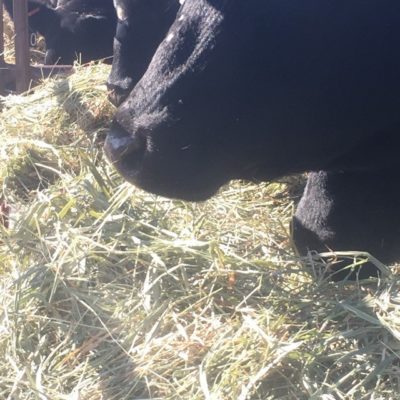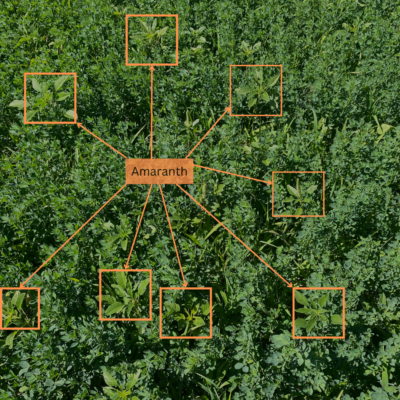Recently, I had a horse owner question the quality of their hay because some bales appeared greener than others and some appeared to be less ‘stemmy’ than others. They submitted three samples from three different bales to run hay analysis for horses. The samples were identified as brown, green and fine. It was interesting to have a visual evaluation with three distinct types of bales in a single lot of hay. So, we chose to analyze the bales and interpret the results, “with a grain of salt”.
Analysis of Three Hay Bales
Figure 1 shows the analysis of each bale. What we observed is that although hay was visually quite variable bale to bale, the green v. brown had little difference in nutritional value and composition. Both bales had a relative forage quality (RFQ) categorizing them as “Fair” hay. The crude protein variation was approximately 1% different. The neutral detergent fiber (NDF), which represents the least digestible portion of the forage, was within a percentage.
So, in this specific case, the visual texture of the stems and leafy materials was similar, and the only difference was color, which had no bearing on the quality of hay. The third type of bale delivered in the lot was described as fine hay. The fine hay was less stemmy and composed of more blades of grass than stems. The nutrient analysis revealed that this bale was indeed less fibrous than the other two and had an RFQ categorizing it higher than the other two bales as “Good” hay. However, despite having less NDF and more non-fiber carbohydrates, this bale had a lower protein than the other two bales.

So, what are the implications of these hay analysis for horses?
This demonstrates the importance of taking a good representative sample of hay to obtain reliable laboratory results. While there was a lack of variation between the brown bale and green bale, the large difference in protein and overall quality of the fine hay bale shows how important it can be to obtain a representative hay analysis to make accurate feeding decisions.
Nutritional Factors to Evaluate on a Hay Analysis for Horses
Moisture
First, always ensure that the moisture is less than or equal to 15% to avoid mold issues. High moisture environments foster the growth of mold. If hay is more than 15% moisture, horses should be monitored for respiratory symptoms. Coughing, sneezing and runny nose will be the first signs that mold may be an issue.
Protein
Second, look at the protein level of the forage. The protein requirement of a 1,200lb horse at maintenance is approximately 8% dry basis. Your horse may require more or less depending on their weight and activity level.
Energy
Third, horses have a digestible energy (DE) requirement. This varies with weight and activity level like protein, with more active or working horses needing more DE than those standing in the pasture. The energy requirement of a 1,200lb horse at maintenance is approximately 0.85 Mcal/lb.
Fiber
Next, understanding the fibrous portion of the hay is also key. Acid detergent fiber (ADF) and neutral detergent fiber (NDF) are important in the horse’s diet because horses are hindgut fermenters. The ADF is the most indigestible portion of the forage and the NDF is the least digestible. Microbes in the horse’s cecum degrade these carbohydrates and produce volatile fatty acids which are the absorbed nutrients. Balanced fiber intake is important to maintaining a healthy digestive tract. Equine nutritionists typically recommend ADF to be less than or equal to 45% dry basis and NDF to be less than or equal to 65% dry basis.
Sugars
Finally, non-structural carbohydrates (NSC) should be considered for horses with metabolic issues including equine diabetes, laminitis or sometimes “easy keepers”. The general guideline for horses with metabolic issues is to keep this value below 10% dry basis. It should be noted that there is no guideline for active healthy horses regarding NSC content of the hay.
In conclusion, it is imperative to obtain a representative hay sample to make informed diet decisions. We interpreted the individual bale samples submitted “with a grain of salt”, and after understand the forage analysis, it is time to add a little tequila and relax with a margarita knowing our horses are receiving a balanced diet based proper forage analysis at Ward Laboratories, Inc.





Great job on the feed analysis. I have enjoyed the Ward’s for many years. Yes, I have know Ray from our S Dak days